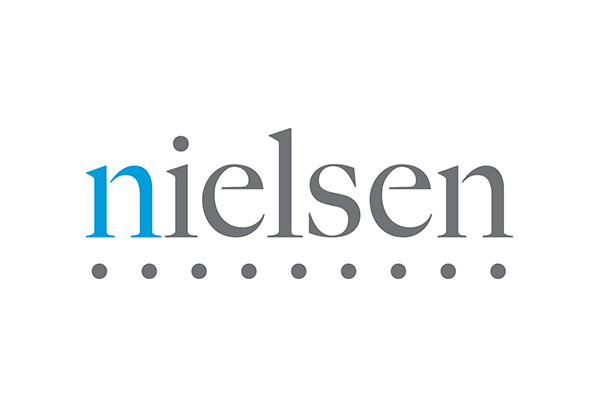
 As evidenced by Amazon’s recent announcement that it intends to acquire Whole Foods Market, the lines between food and beverage purchase channels are growing increasingly blurry.
As evidenced by Amazon’s recent announcement that it intends to acquire Whole Foods Market, the lines between food and beverage purchase channels are growing increasingly blurry.
We see the signs across the board, as consumers are spending more money eating away from home than at home ($800 billion away from home versus $793 billion at home in 2016, according to the USDA1); venturing online to fill the pantry (we project that e-commerce could grow from 4% to 20% of grocery sales by 2025); and experimenting with new avenues of food preparation (e.g., 25% have tried meal kits).
While unexpected by many, the Amazon-Whole Foods linkage highlights just how profoundly consumer expectations regarding food and beverage shopping are changing, and will continue to do so.
But as analysts speculate about how the acquisition will affect the grocery business, their predictions about pricing models and industry players are missing a key component of Amazon’s strength: the consumer. In that regard, I think we should ask a different question first: What will the acquisition mean for the food and beverage consumer experience?
One way to predict is to recall what Amazon has already done for consumers. There are at least three sets of benefits to shopping that Amazon arguably delivers better today than any other company in the world (except maybe in China, where Alibaba is the largest online retail platform):
1. Options. As my eight-year-old son recently declared, “You can buy anything on Amazon!” That could be overwhelming. But we should expect Amazon to bring to food and beverage what they have brought to other industries: a wide variety of products and services so the consumer can choose the right one for his goal—whether that’s shopping for weekly food, doing a pantry stock-up or ordering a meal an hour before dinner. Amazon’s retail platform is already used as a filter by more than half of Americans, who start their online product searches there rather than on Google or on retailers’ own sites2. The Whole Foods acquisition suggests that this capability will expand to all food and beverage options.
For example, suppose I decided to have chicken tacos for dinner on the Friday evening that the acquisition was announced. From Amazon alone, I could use AmazonFresh to deliver the ingredients, order the prepared dish from Amazon Restaurants, or purchase a meal kit from Tyson Tastemakers or Marley Spoon (in certain cities) ahead of time. With Whole Foods in the mix, I would have even more options (including the old-fashioned, but still dominant, trip to the store). In particular, Whole Foods will provide a new health-focused set of choices to Amazon shoppers, with search results that include ingredients and prepared foods. In a comparison of the top 100 brands sold at Whole Foods and the top 100 brands sold in all other retail outlets, only one brand is on both lists3; the natural retailer has an almost entirely distinct set of products that will find a much bigger scale of exposure with Amazon.
Eventually, I would expect all of these options to be brought together in such a way that I could type or say “chicken tacos,” then choose the details of what I want and how from a comprehensive list served up by Amazon.
2. Personalized curation. But Amazon doesn’t stop there; it curates options based on an individual shopper’s purchase history, and it will get better at that over time. The most extreme example of this is the intelligent personal assistant Alexa, which returns one option when asked to buy something on Amazon. Because Amazon follows its shoppers’ purchases over time, it could eventually point an individual toward what she wants, both across different food purchase channels and, within that, to the right meals or ingredients. The addition of Whole Foods will yield better recommendations, because Amazon will have both new data to learn from (adding offline data to Amazon’s mix could hugely expand its understanding of shopper behavior) and more possibilities to select from. Personalized curation will likely resonate most with digitally engaged food shoppers, who have come to expect an individualized shopping experience.2
So, I imagine being able to type in “chicken tacos” and see a customized recommendation, along with other options I might like. Because I tend to take out rather than cook on a Friday, I’d expect my favorite restaurant to come up first, followed by a fresh prepared option from my favorite Whole Foods store. If I specify that I want to cook, Amazon might pull up the ingredients from a recipe in one of my favorite cookbooks on my Kindle account, or based on the last time I made chicken tacos. Alexa would guide me through the recipe.
If I venture to Whole Foods to purchase the ingredients, Amazon could create a shopping list for me beforehand based on my purchase history, with an in-store product assortment tailored to local patrons and organized by “top rated” and “most subscribed to” items. The e-commerce giant would thus deliver a data-enabled brick-and-mortar food shopping experience, similar to what it has created in its physical bookstores.
3. Connected services. Amazon will likely not keep its portfolio of food and beverage services siloed, but rather take advantage of the fact that it provides natural complements. In my example, Amazon might offer movie recommendations along with the Friday night meal. Or, if I’m going to pick up groceries from my local Whole Foods along with the chicken taco ingredients, it might recommend a new twist on the tacos, a dessert I love, or a few things that I might be running low on given my purchase history. And maybe I’ll also pick up the other household items I ordered earlier in the day, which are now waiting for me at Whole Foods.
The most significant innovations in food and beverage are coming from the experiences of shopping for and preparing food, rather than the products themselves, and Amazon + Whole Foods will be part of that innovation wave. There will be a range of new benefits to the consumer across these three areas, some stemming directly from the acquisition. But that acquisition also sits in a broader ecosystem that could transform the ways consumers experience shopping for food and beverage, both online and in-store.
Now, let’s turn to the question so many others have been asking: What will be the impact on the grocery industry and for food and beverage overall? One implication is clear: More than ever, companies must focus on making the consumer experience as convenient as possible. What will draw consumers to Amazon can also draw them away: product variety, complementary services, seamless cross-channel access, pricing, and personalized ways to navigate it all. And as many companies (including retailers) choose to leverage the Amazon platform as part of their own omnichannel strategies, perhaps new business models will continue to emerge from that cooperation/competition coexistence.
Amazon, while it continues to increase its sphere of influence on the consumer experience, will never be the only retail platform. (After all, Alibaba has ambitions of its own to be the fifth-largest economy in the world.) All food and beverage retailers can take lessons from what’s next for Amazon, but should also find and address the other opportunities to serve shoppers in relevant and differentiated ways.
Sources
- U.S. Department of Agriculture Economic Research Service, Food Expenditure series, 2017
- BloomReach, State of Amazon study, 2016
- Nielsen Answers, Total U.S., 52 weeks ended Dec. 31, 2016


























